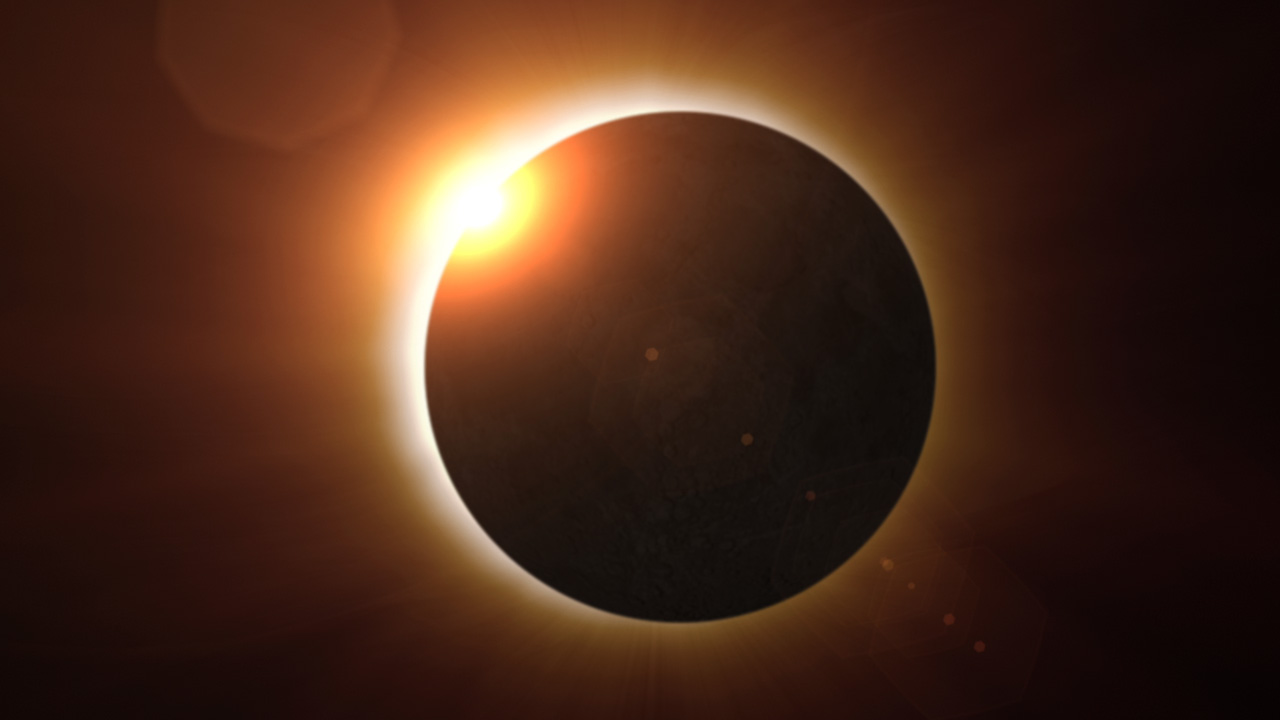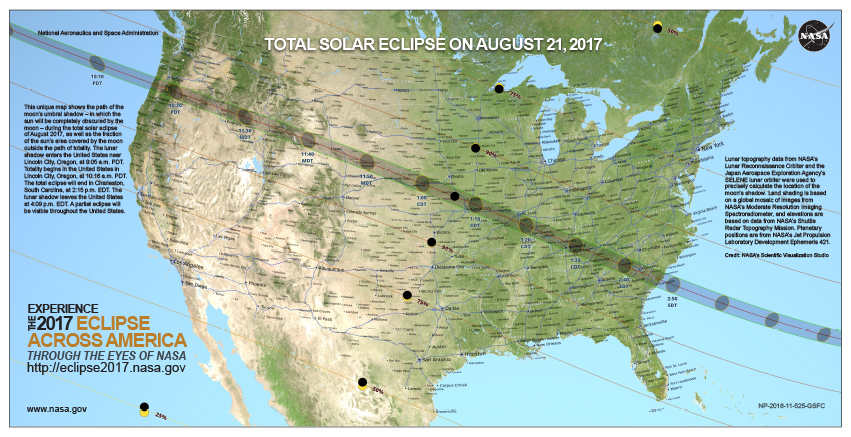The Great American Eclipse Is 2 Weeks Away. Are You Ready?
There are only two weeks until the total solar eclipse of Aug. 21, 2017. If you're traveling into the path of totality, it's time to make sure your plans are in order.
The Aug. 21 total solar eclipse will sweep across the continental U.S., beginning in Oregon and ending in South Carolina. The last time an eclipse touched both American coasts was in 1918. Eclipse enthusiasts say this phenomenon is one of the most spectacular sights in nature. As a sort of celestial preview, the moon will pass through part of Earth's shadow in a partial lunar eclipse today (Aug. 7).
Skywatchers throughout the U.S. will be able to witness a partial solar eclipse on Aug. 21, when the moon covers less than 100 percent of the sun's disk. But only skywatchers inside the path of totality will see the incredible phenomenon of a total solar eclipse. Wherever you will be, it's a good idea to have solar viewing glasses on hand. Or, you can build your own pinhole camera to watch the moon's progress across the sun. [Where to See the 2017 Total Solar Eclipse, State by State]

You can use this interactive eclipse map to find out exactly where totality will be visible, as well as when totality will occur at different locations inside the path. Totality will last for less than 3 minutes depending on how close you are locatedto the center line, so make sure you are looking skyward at the right time!
If you plan on traveling to see totality, be aware that experts are expecting nightmarish traffic conditions. Plan for extra time to reach your destination. Many cities and towns along the path of totality are planning eclipse-related events that could cause additional traffic delays. Research your destination ahead of time to find out where to park and where to observe the eclipse.

Massive crowds are expected to converge on the path of totality, and members of the American Astronomical Society (AAS) Eclipse Task Force have suggested that people driving to the path of totality should have food, water and a full tank of gas, in case you find yourself stuck on a highway for an extended period. When you reach your destination, be aware of where you can find additional supplies, as well as bathroom facilities. People who live inside the path of totality may also want to stock up on basic supplies and gasoline.
Due to the somewhat unique nature of this event, hotel rooms in the path of totality are difficult to come by, and those that are still available are often very expensive. However, travelers may still be able to find campgrounds and RV parks inside the eclipse path with room to spare. Alternatively, travelers could consider renting a room or a private home through the website Airbnb.com.
Get the Space.com Newsletter
Breaking space news, the latest updates on rocket launches, skywatching events and more!
Whatever your eclipse plans are, now is the time to solidify any travel plans and get your eclipse-viewing equipment. Don't miss this incredible opportunity!
Editor's note: Space.com has teamed up with Simulation Curriculum to offer this awesome Eclipse Safari app to help you enjoy your eclipse experience. The free app is available for Apple and Android, and you can view it on the web. If you take an amazing photo of the Aug. 21 solar eclipse, let us know! Send photos and comments to: spacephotos@space.com.
Follow Calla Cofield @callacofield. Follow us @Spacedotcom, Facebook and Google+. Original article on Space.com.
Join our Space Forums to keep talking space on the latest missions, night sky and more! And if you have a news tip, correction or comment, let us know at: community@space.com.

Calla Cofield joined Space.com's crew in October 2014. She enjoys writing about black holes, exploding stars, ripples in space-time, science in comic books, and all the mysteries of the cosmos. Prior to joining Space.com Calla worked as a freelance writer, with her work appearing in APS News, Symmetry magazine, Scientific American, Nature News, Physics World, and others. From 2010 to 2014 she was a producer for The Physics Central Podcast. Previously, Calla worked at the American Museum of Natural History in New York City (hands down the best office building ever) and SLAC National Accelerator Laboratory in California. Calla studied physics at the University of Massachusetts, Amherst and is originally from Sandy, Utah. In 2018, Calla left Space.com to join NASA's Jet Propulsion Laboratory media team where she oversees astronomy, physics, exoplanets and the Cold Atom Lab mission. She has been underground at three of the largest particle accelerators in the world and would really like to know what the heck dark matter is. Contact Calla via: E-Mail – Twitter









